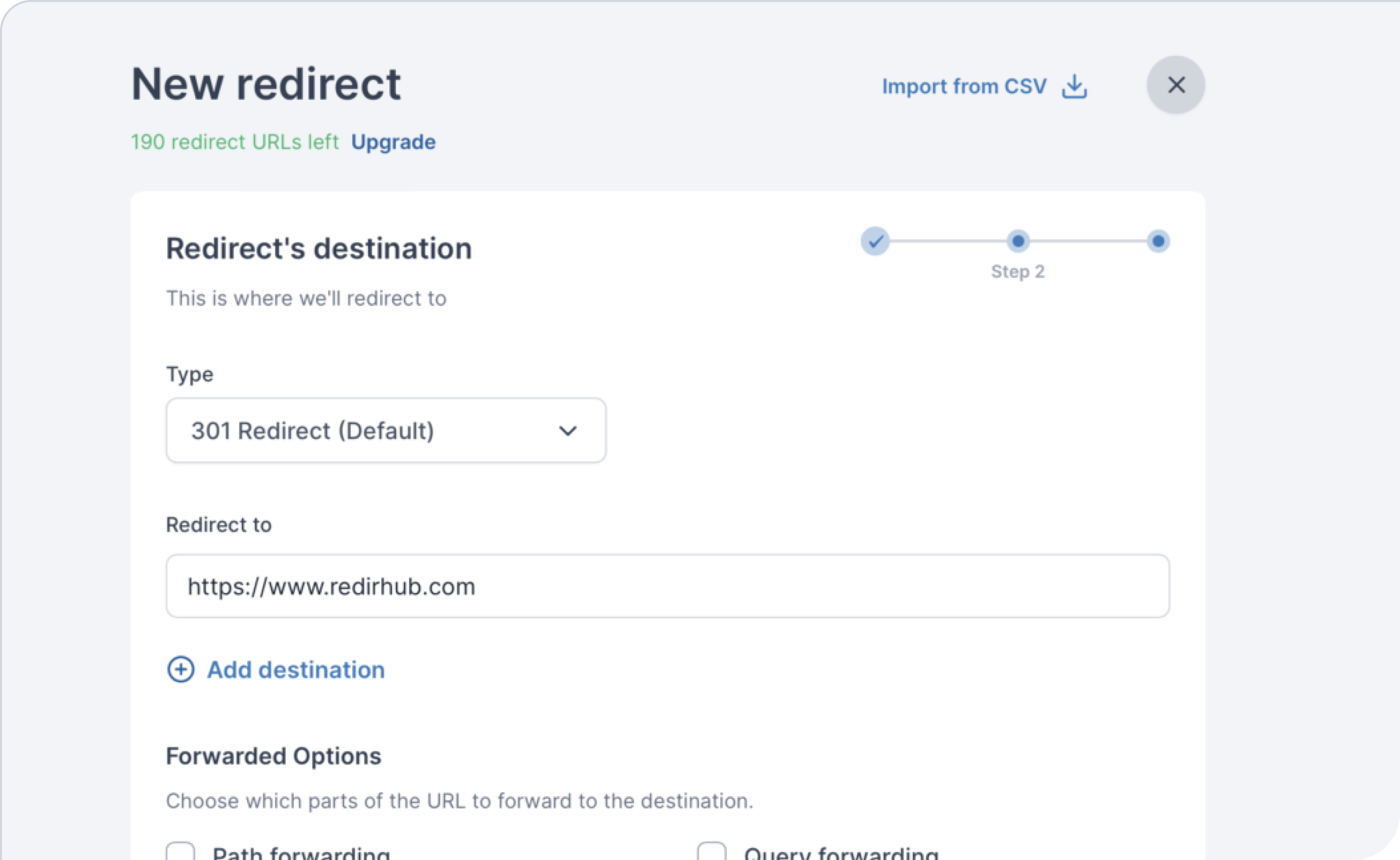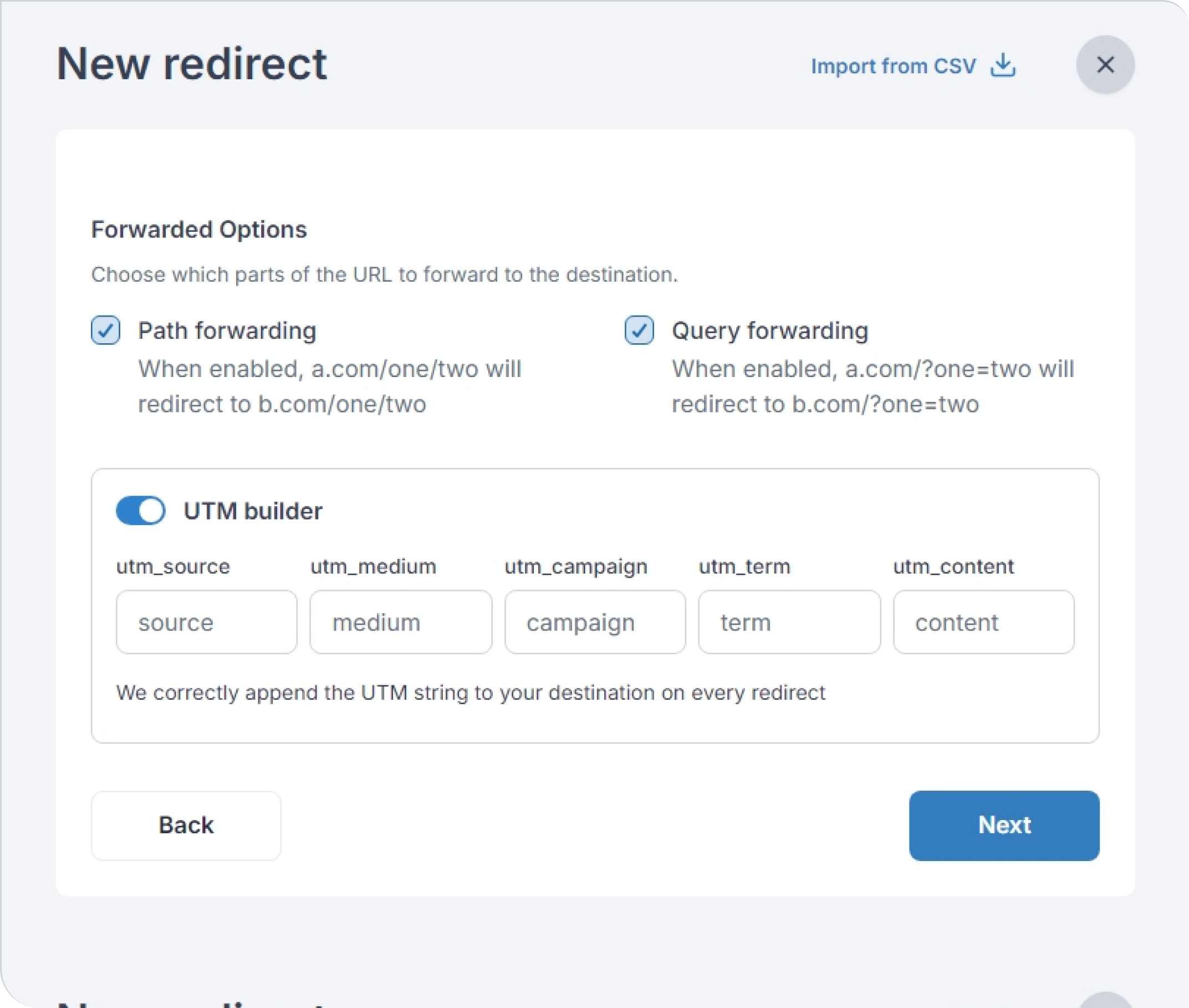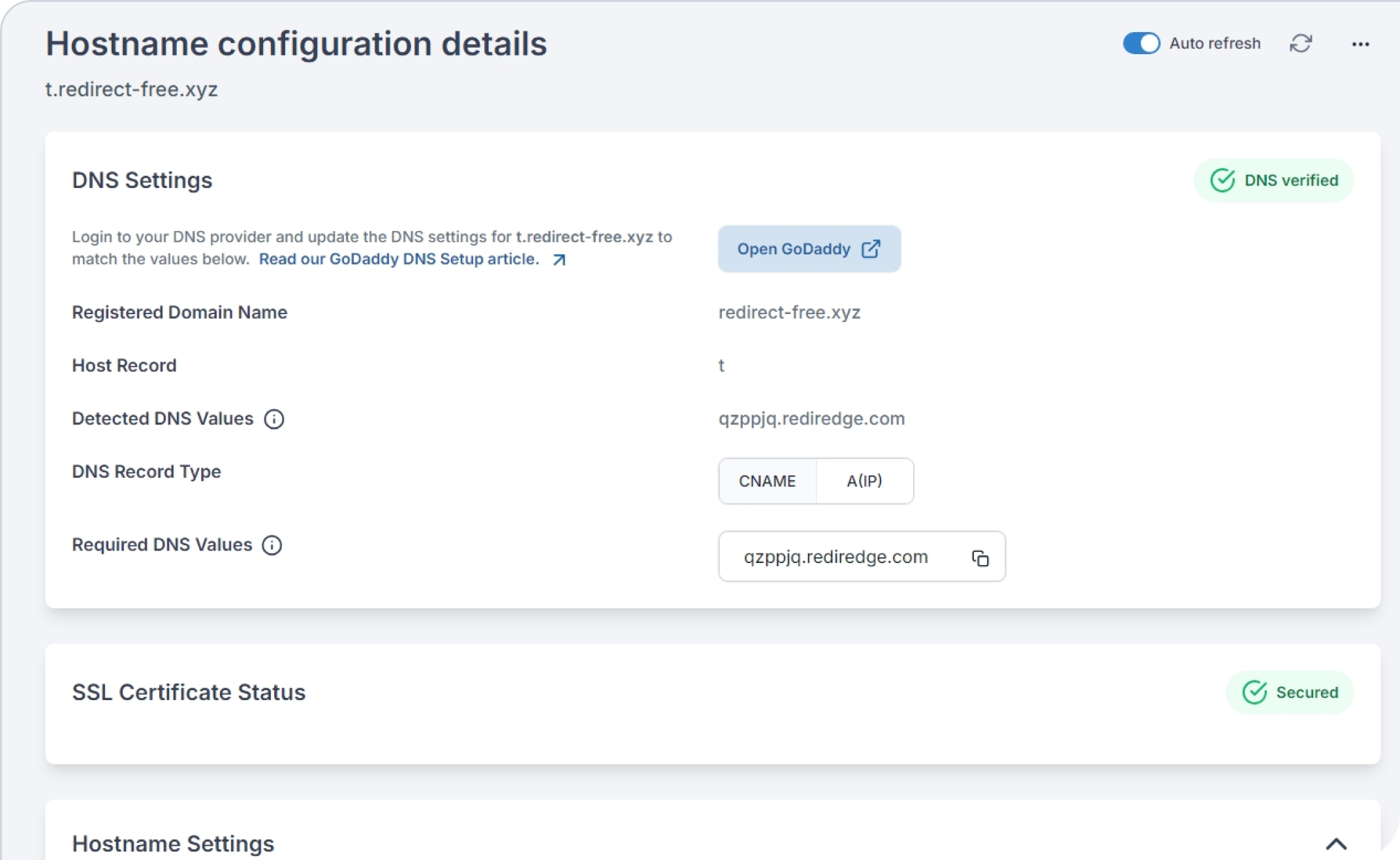Create and Deploy Redirects
Transform your link management with powerful, intuitive
redirect creation tools that put you in control

Create Individual Redirects
Set up redirects with our easy-to-use interface. Configure source
URLs, destination paths, and redirect types in seconds
- Quick Setup: Create redirects in seconds with our streamlined interface and instant validation
- Flexible Redirect Types: Choose between 301 permanent redirects and 302 temporary redirects based on your needs
- Instant Validation: Real-time URL validation ensures your redirects are properly formatted and functional

URL Path Customization
Create powerful redirect rules using pattern matching and regular expressions.

- Forwarded Options: Choose which parts of the URL to forward to the destination, including path forwarding (a.com/one/two → b.com/one/two) and query forwarding (a.com/?one=two → b.com/?one=two).
- UTM Builder: Automatically append UTM parameters (source, medium, campaign, term, content) to your destination URL on every redirect.
- Regular Expressions: Use regex patterns to create flexible redirect rules that match multiple URLs.
- Wildcard Support: Implement wildcard matching to handle dynamic URL structures efficiently.
- Path Parameters: Maintain URL parameters and path structures in your redirects automatically.
Bulk Import & Export
Manage multiple redirects efficiently with our bulk operation tools
- CSV Import: Upload CSV files to create multiple redirects in one operation.
- Batch Processing: Edit, update, or delete multiple redirects simultaneously.
- Validation & Review: Preview and validate all redirects before deployment.

Bot Protection & Monitoring
Configure advanced security measures and link monitoring for your redirects

- URL Monitoring: Stay ahead of broken links with automated checks, notifications, and fallback options for broken destinations.
- Bot Security: Control bot access with multiple protection layers including crawler blocking and JavaScript challenges.
- Platform Handling: Customize redirect behavior for specific platforms like WeChat to ensure optimal user experience.
- Tag Management: Create and organize redirects with custom tags for better management and filtering.
Domain Configuration
Manage redirect settings across multiple domains and subdomains
- Multi-domain Support: Create and manage redirects across all your domains from one interface.
- Custom Rules: Set domain-specific redirect rules and default behaviors.
- SSL Support: Automatic HTTPS redirect handling and SSL certificate management.

Why Our Customers Love RedirHub

InSearchOf

MarketedPotential
Chris Panton
Frequently asked questions
What is a URL redirect?
A URL redirect, also known as URL forwarding, is a technique used to send users from one URL to another automatically. It’s commonly used for website migrations, marketing campaigns, and fixing broken links.
How do I redirect a URL?
You can redirect a URL by configuring your server, using a redirection service like RedirHub, or adding redirect rules through your website’s CMS or hosting provider.
What is a URL redirection service?
A URL redirection service simplifies the process of managing and tracking redirects, allowing you to create custom short links, analyze traffic, and optimize user flows effortlessly.
What are examples of URL redirection?
Examples include:
- Redirecting oldwebsite.com to newwebsite.com.
- Redirecting example.com/page to example.com/new-page.
- Shortened links like bit.ly/redirect redirecting to a full URL.
What is the best way to manage URL redirects?
Using a dedicated tool like RedirHub ensures that redirects are efficient, properly tracked, and easily managed without technical complexity.
How do I create a custom redirect URL?
You can create a custom redirect URL through RedirHub by setting up a branded domain, choosing a short path, and linking it to your destination URL.
Why is HTTPS better than HTTP for redirects?
HTTPS ensures secure data transmission between your users and the destination server, enhancing trust and protecting against data interception.
Why are URL redirects important?
Redirects are crucial for maintaining SEO rankings, preserving link equity, ensuring a seamless user experience, and avoiding broken links.
What is the difference between URL and HTTP redirects?
A URL redirect refers to sending users from one address to another, while HTTP redirects specify how servers should handle redirection using response codes (e.g., 301, 302).
Why is the ‘www’ prefix not commonly used anymore?
Modern websites often use naked domains (e.g., example.com) for simplicity and better branding, though www is still valid and can be redirected accordingly.
What is the difference between a URL and a URI?
A URL (Uniform Resource Locator) specifies the address of a resource on the internet, while a URI (Uniform Resource Identifier) is a broader term that includes URLs and URNs (names).
Can URL redirects affect SEO?
Yes, improper redirects can harm SEO. Use 301 redirects for permanent changes and 302 for temporary ones to ensure search engines index your content correctly.
What tools are best for managing large-scale URL redirects?
Tools like RedirHub provide advanced management capabilities, including bulk redirect handling, analytics, and automation for high-volume projects.
